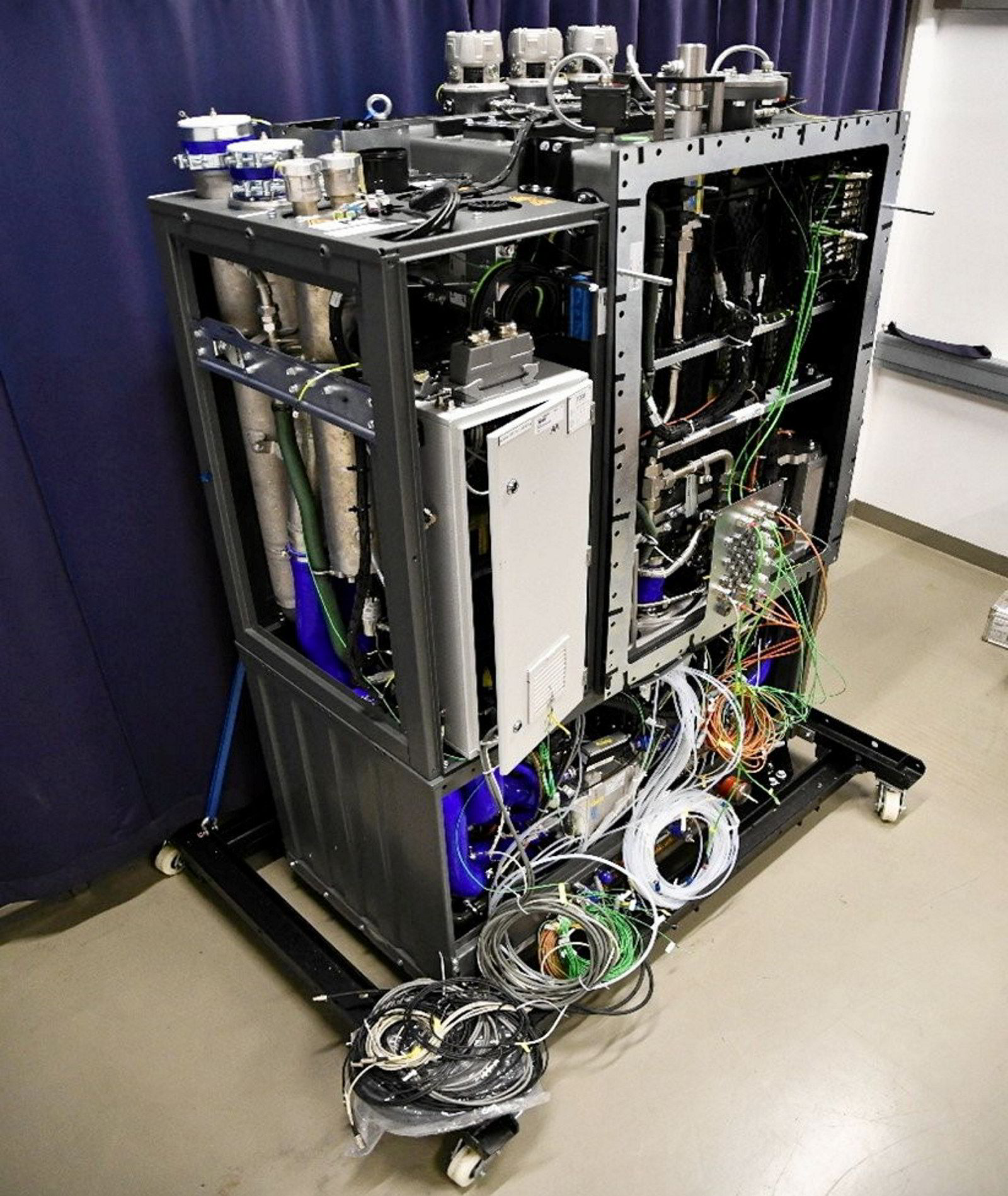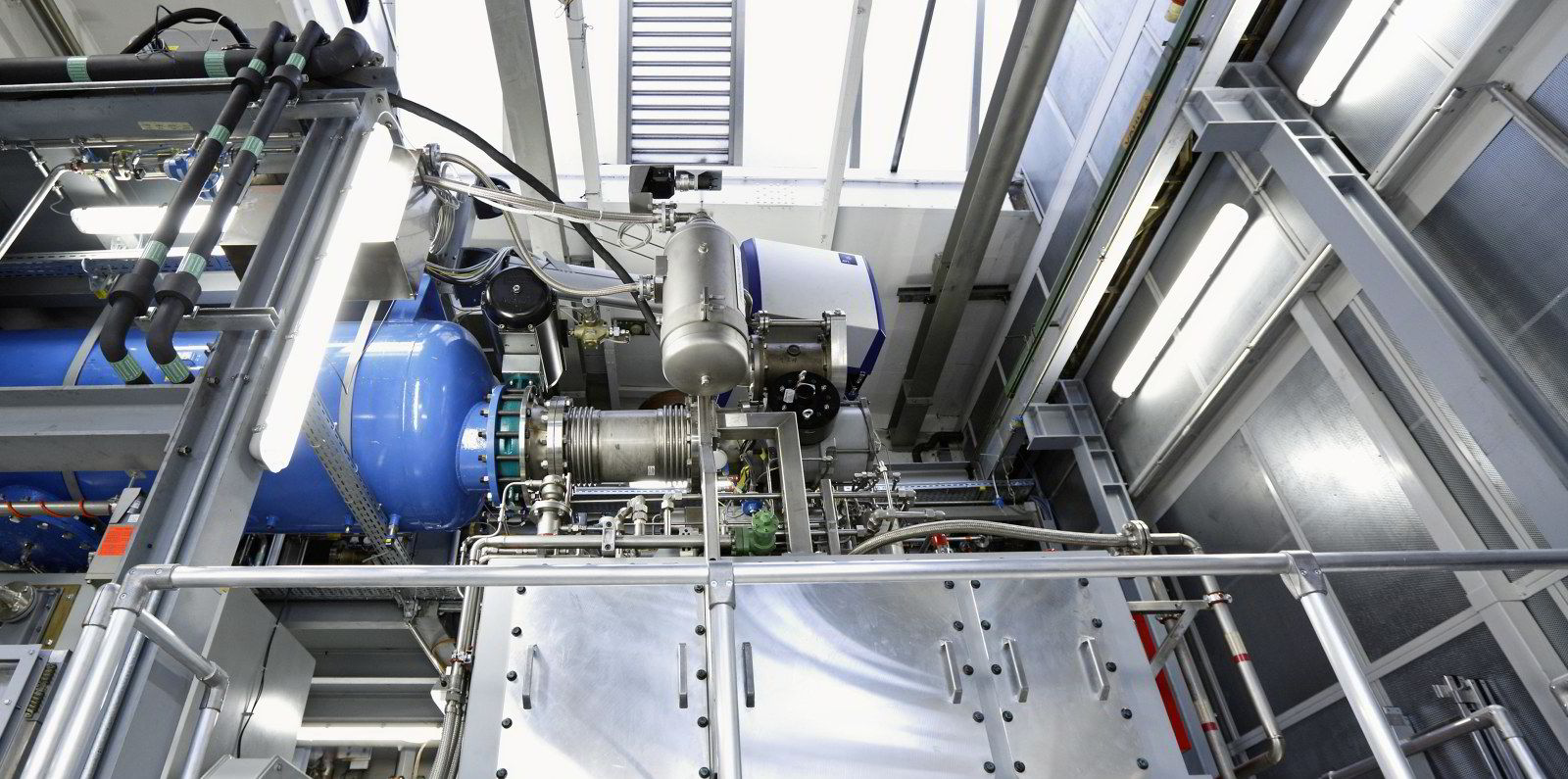As shipping focuses on methanol and ammonia as the leading alternative fuels to take the industry into a greener future, marine technology companies are pushing forward the development of engines and fuel cells that give hydrogen a more prominent place in the mix.
Among recent developments, Norway’s TECO 2030 has launched what it touts as the most compact and energy-efficient fuel cell system on the market, with the potential to serve as a primary or auxiliary marine engine with its small footprint.
Engine giant MAN Energy Solutions, meanwhile, announced a partnership that includes a unit of cruise titan Carnival Corp to explore dual-fuel hydrogen engines that can also run on conventional marine fuels.

As TradeWinds has reported, shipbuilding heavyweight HD Hyundai Group has invested €45m ($47.7m) in Elcogen, an Estonian company that makes fuel cells that run on hydrogen and electrolysers that can produce fuel from renewable energy.
For shipping, hydrogen is both appealing and challenging as a fuel. When burned, it has no emissions other than water, and when produced from renewable energy, it can have a zero-carbon supply chain.
But, its low energy density is a major hurdle for long-haul shipping because storing enough fuel for an ocean voyage takes up so much space. That is why turning green hydrogen into synthetic methanol, ammonia or LNG is widely seen as more efficient.
But the underway technological developments represent bets that there will be a place for hydrogen in a multi-fuel future for the industry and that other technologies like ammonia crackers or methanol reformers could even see those fuels converted into hydrogen onboard vessels.
Tore Enger, chief executive of Oslo-listed TECO 2030, said he believes hydrogen fuelling will take its place in “a beautiful mix of many things” that includes fuel cells that use the fuel directly or that use it in combination with an ammonia cracker or a methanol reformer.
“There are going to be many pathways there,” he told Green Seas. “What we know is that the fuel cell market in general is going to be tremendously big.”
How huge will the fuel cell market be? TECO cites forecasts by consultancy McKinsey and bank Citigroup that estimate there could be 50 GW of fuel cells for all industries by 2030, which translates to a $35bn to $45bn market. Citigroup predicts there could be a 500-GW fuel cell market by 2050, worth $200bn to $275bn.
And Enger said shipping is expected to make up a piece of that pie through hydrogen-fuelled vessels and ships using other fuels that can be converted to hydrogen on board.
After all, he said, hydrogen fuel cells are the only way to get to zero emissions truly.

“Today, international shipping is chargeable for almost 3% of all greenhouse gases. If they don’t do anything, and the remaining part of the world is doing their job, then shipping will end up between 15% and 20%,” he said.
Enger said his company is very close to producing its new fuel cells. It is slated to provide container-based fuel cells for a construction site in Norway, and it is working with Shell and others to install a fuel cell on a small bitumen tanker.
The company has also signed a deal with Pherousa Green Shipping to supply its fuel cell to six 63,000-dwt bulker newbuildings outfitted with ammonia crackers.
It is working to set up a production facility for its hydrogen fuel cell stacks and modules in Narvik, Norway.
Enger said hydrogen could be used as a fuel in shortsea shipping and the ferry sector, while it could be used in auxiliary fuel cells to allow ships to operate with zero emissions in port or sensitive coastal areas.
For fuel cells in long-haul shipping, first movers will likely use ammonia and methanol.
As TECO 2030 closes in on fuel cell production, MAN Energy Solutions is exploring using hydrogen in a dual-fuel internal combustion engine for shipping and single-fuel applications on land.

The HydroPoLEn project, funded by Germany’s Federal Ministry for Economic Affairs and Climate Action, is exploring various challenges using hydrogen in engines. Alexander Knafl, the head of research and development for four-stroke engines at MAN, said the project is also aiming to develop combustion concepts with power density and efficiency similar to other dual-fuel engines.
The effort is also looking at safety, integration with other parts on the ship and the supply chain for the components required.
“We see the feasibility — that’s basically proven — and now we want to prepare engineering concepts to the extent possible,” he told Green Seas. “The market is not quite ready. The fuel isn’t there, but we want to be ready when the fuel is there.”
Where does MAN see hydrogen engines going into use? Knafl said ship operators, for example, in the cruise sector, could switch to hydrogen in areas where emissions are heavily restricted, like Norwegian fjords or populous port areas.
He also pointed to shortsea shipping and ferries on voyages over short distances with less refuelling needs or predictable point-to-point routes.
“In deepsea shipping, there is a lot of discussion if that’s possible with hydrogen,” he said. “And as it stands right now, it’s very difficult due to the low volumetric energy content of the fuel.”
If manufacturers can produce fuel cell stacks powerful enough to operate as main engines, what are the advantages of a hydrogen-fuelled internal combustion engine?

For one, Knafl said fuel cells are more efficient at low power loads, but it is the opposite for combustion engines.
He also said that achieving an engine’s power requires stacking many fuel cells.
And then there’s the flexibility. Not only can engines be dual-fuelled, but they also are less finicky about the purity of the hydrogen. Fuel cells are relatively intolerant to impurities, he said.
“When it comes to pure durability, engines have the edge. We’ve been continuously improving engines for 130 years now, so there’s this long track record,” Knafl said.
_____________
Podcast: The rise and risk of Arctic shipping traffic
More ships and a wider variety of ships, including older vessels not built for ice, are transiting the Arctic as Russia looks to increase use of the Northern Sea Route.
But while this may be an opportunity for shipping, it also has significant environmental risks.
The Green Seas podcast explores them individually with Clean Arctic Alliance lead advisor Sian Prior and Margaret Williams, a senior fellow at Harvard University’s Belfer Center for Science and International Affairs.
_____________
Blow to Orsted, Equinor and BP as New York rejects pleas for offshore wind contract relief, leaving 4 GW in limbo
Recharge reports that nearly all of New York’s pacesetting 4.3 GW of contracted offshore wind capacity is now in limbo following the rejection of developers’ pleas for inflation relief by the state’s utility regulator.
New York Public Service Commission denied petitions by the state’s two offshore wind developers, joint ventures of Equinor with BP and Orsted with Eversource, for increases to offtake contracts as high as 55%, which one commission member reportedly described as “breathtaking”.
One lobby group immediately called for the state to think again, while analysts told Recharge that the move raises questions over the state’s buildout plans.
_____________
Carbon shipping set to ‘blow up’ despite markets being ‘most difficult’ to read, says Capital’s Kalogiratos
TradeWinds’ Julian Bray reports that a leading shipowner believes an exciting new market in shipping CO2 captured from industries still burning fossil fuels is set to “blow up” by the end of this decade.
Jerry Kalogiratos, chief executive of Capital Product Partners, said the carbon capture and storage market would be a key shipping trade as the world decarbonises, alongside ammonia.
“The CCS market is a huge market that — in the next five years — is going to blow up,” he told Marine Money’s Greek Ship Finance Forum in Athens.







